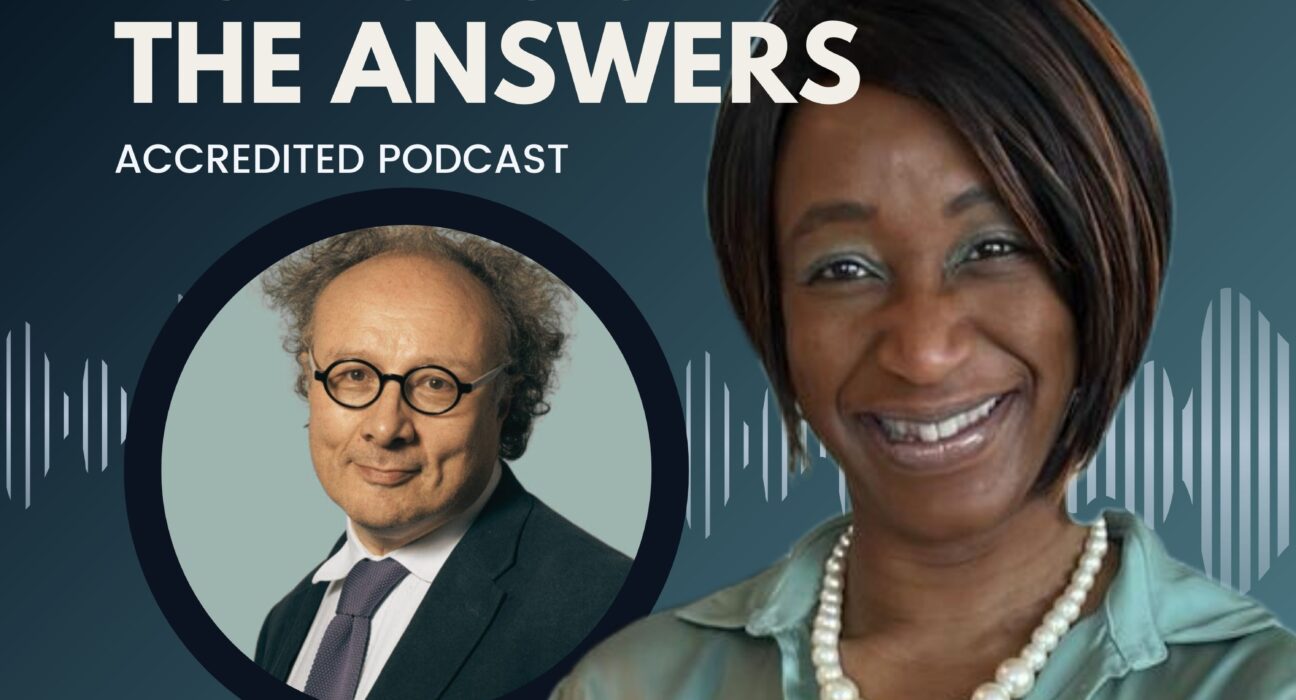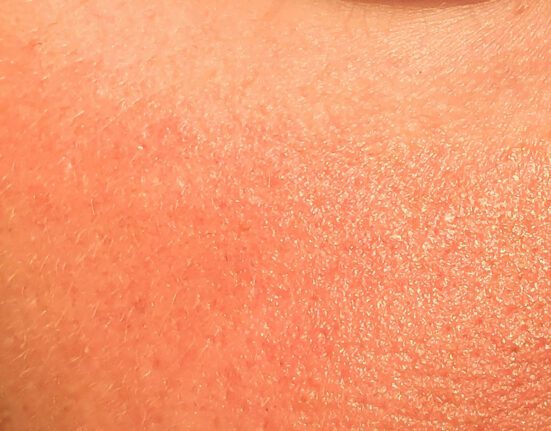
Join us for insightful discussions on Long COVID with Professor Danny Altmann, delving into its pathophysiology, persistent viral reservoirs, organ damage implications, and its intriguing connections to ME/CFS.
Guest – Professor Danny Altmann
Note: The podcast has no bias. All conflicts of interest are highlighted with individual guests.
Healthcare Professionals | Earn 0.5 Certified Mainpro+® Credits! Please register/login to claim your CPD/ CEU credits.
Podcast Overview:
- Introduction by Funmi Okunola with Professor Danny Altmann on Long COVID pathophysiology. SARS-CoV-2 causes organ damage and persistent viral reservoirs, evidenced in tissues and ongoing immune responses.
- Long COVID shows significant overlap with ME/CFS, sharing biomarkers and microbiome changes. Recognition of Long COVID clarifies its connection to a single virus, aiding ME/CFS understanding. Long COVID is a serious, disabling disease with increased risks of diabetes and heart attacks. Professor Altmann emphasizes biological and physiological causes for symptoms, not psychological.
- Importance of biomarkers like eotaxin is highlighted, even without direct viral presence in the brain. Latent viral reactivation, particularly Epstein-Barr virus, is explored. Holistic, patient-centered approaches to management and care are advocated.
- Challenges include the lack of a standard definition and varying symptom severity, necessitating specialized healthcare. Recognition and naming of Long COVID are critical for validation and research progress.
Long COVID is a complex disease with persistent viral reservoirs, organ damage, and similarities to ME/CFS, emphasizing the need for comprehensive understanding and specialized care.
Dr. Funmi Okunola MD
DISCLAIMER: The information in this podcast is provided for informational purposes only. You should not use any information discussed in this podcast and related materials to make medical or healthcare related decisions. Always consult a your physician or other qualified health care provider with regards to diagnosing managing your medical condition. Any medications or treatments, including any discussed in this podcast, should be initiated and managed by a qualified health care professional.
Podcast Transcript:
Healthcare Professionals: Please note to claim Certified CPD / CEU credits toward your medical license (Canada & reciprocal CPD/CEU Worldwide), you will need to register or log in.
[00:00:00] The information in this podcast is provided for informational purposes only. You should not use any information discussed in this podcast and related materials to make medical or healthcare related decisions. Always consult your physician or other qualified healthcare provider with regards to diagnosing and managing your medical condition. Any medications or treatments, including any discussed in this podcast should be initiated and managed by a qualified healthcare professional.
THE PATHOPHYSIOLOGY OF LONG COVID – EPISODE 2 with Professor Danny Altmann
INTRODUCTION to Long COVID and Professor Danny Altmann
Funmi Okunola: [00:00:00] Welcome to Long Covid – The Answers. I’d like to introduce Professor Danny Altmann. This week’s Episode Two is called “The Proposed Pathophysiology of Long Covid” and is again based on the second half of Professor Altmann’s review article – “The Immunology of Long Covid” published in Nature Reviews Immunology in July 2023.
Danny Altmann: Hi.
Funmi Okunola: Hi, Danny. Today we’re going to talk about the proposed pathophysiology of Long COVID. What this means is the mechanism by which we presently understand how Long COVID alters the way the body functions. Professor Altmann, could you explain to the audience why it is important for scientists and healthcare professionals to have an understanding of the pathophysiology of Long COVID?
Danny Altmann: Yeah, I mean, it feels desperately important to us at the moment, doesn’t it? Yeah. If you spend as much time as I do with Long COVID support groups, Long COVID sufferers, some people at this stage [00:01:00] two or three or four years on in their journey, are very, impatient, angry and desperate for treatments and clinical trials.
Sometimes they almost feel like we must know the answer and we’re somehow, oh, you know, cynically withholding them for some sort of, I don’t know, you know, nefarious reasons, and of course the answer is that the biomedical communities work fast but not that fast, and people just don’t know and can’t agree on the answers.
If you put a gun to my head now and said, tell us which 20 drugs would you put into a clinical trial? I probably wouldn’t be able to name which ones we need because we just need the answers. That’s the very long way of answering your question that unless we do enough basic science to really pick apart the different pathways and mechanisms, I can’t tell you how much weighting I would give to, or which kind of anticoagulation compared to which kind of anti-herpes virus [00:02:00] compared to a monoclonal SARS-CoV-2 for persistence. There are many different hypotheses out there, but I wouldn’t be able to construct a really valid trial without knowing the nuts and bolts of what I think is happening.
Funmi Okunola: Thank you. Great concise answer. Let’s go through each of the proposed mechanisms in turn and look at organ damage.
Organ Damage from SARS-CoV-2
So, what evidence do we have that a SARS CoV2 infection damages organs and that this damage leads to Long COVID?
Danny Altmann: It sounds like a simple question, but again all of this is hard to give a simple answer.
So, lots of rather good evidence. I think that SARS-CoV-2 infection leads to organ damage, yeah? So, if I were to tell you some of my favourite examples in the PHOSP cohort, the UK post-hospitalised cohort, there’s a study called Seymour, which is MRl follow up showing correlation between having COVID, having severe COVID, being hospitalized, and having MRl visible organ [00:03:00] damage, particularly in the lungs.
So, you have things like that. Another one I find terrifying and compelling is from the UK again – UK Biobank. UK Biobank is very useful for these discussions because obviously it’s an, um, enormously funded resource that’s been going now for about 15 years where ‘normal’, healthy people come into the study and are just a biobank of data, tracked the rest of their lifetime across clinical measurements, genome, sequencing, every possible kind of function, and immunology to see what becomes of you and what the correlates are.
So, the reason for that big introduction is that the advantage of biobank in this is that what they could do was take a load of people who’d all had their brains imaged before COVID. So, it was known what their brains looked like, size, structure. That was coupled to [00:04:00] tests of neurocognitive function.
Then because it was the COVID pandemic, a certain high proportion of those people got infected with SARS-CoV-2. They could call them back in and say, okay, let’s do the before and after. After you’ve had SARS-CoV-2, how has your brain size, structure, function, and neurocognitive tests changed?
This gets around all of that kind of criticism about how it’s subjective and it’s self- reported and it’s uncontrolled – the perfect before and after study. If you read the study, it’s terrifying and devastating because the answer is that if you have SARS- CoV-2, even mild SARS-CoV-2, it changes your brain.
It changes the way your brain MRI looks, and it makes you more stupid!
Funmi Okunola: Yeah.
Danny Altmann: Sorry to say it so bluntly.
Funmi Okunola: Yeah, I read that paper. I remember when it was first released, and that’s why I mask everywhere. It’s really, really shocking, and I will include all the papers that Danny mentions in the show notes.
Persistent Viral Reservoir Theory
If we move [00:05:00] on to the persistent viral reservoir theory, what is the persistent viral reservoir?
Danny Altmann: The Persistent Viral Reservoir Theory would, as the name suggests, would say that once you’ve been through your symptomatic period, you were PCR positive or lateral flow positive, and you felt like the main bout of the disease was over after10 days or whatever it was, the theory would say that the virus hasn’t gone away, hasn’t been completely cleared, and there are parts of your body – one that we talk about perhaps the most is the gut, but perhaps not only the gut where the virus can simply hunker down and persist.
When I say not only the gut again, sorry, it feels like I’m specializing in some scaremongering and scary papers, but there’s another very famous paper in Nature where they do post mortem studies of every possible organ and tissue out of people who’ve died during the COVID pandemic, and they find virus everywhere.
It’s not cleared, [00:06:00] and it’s not just in the respiratory system, it’s all over the place, hiding in different tissues. So that’s the kind of evidence that exists.
One of the pieces of evidence that really got me on board was from a very good immunology group in New York. They studied antibody repertoires and which antibodies we make in response to the virus. What they found was in some people, for months after their acute infection, it looked like their antibodies were still turning over and maturing and becoming more specific for the virus. They couldn’t understand what the driver for this immune maturation would be.
So, they were one of the groups who looked at bits of tissue from the gut in patients who’d had endoscopy and showed that kind of antibody maceration, if you like, is associated with having persistent virus in your gut. That, to me, seemed like a very compelling argument.
Funmi Okunola: So, I haven’t read that paper, [00:07:00] did they find that in healthy individuals or people with long COVID?
Danny Altmann: So, because that was the first study where nobody knew it was a thing and nobody knew what they were looking for in that version of it, that
wasn’t tied to even asking about any persistent symptoms of long COVID. That was simply people who’d had COVID and had this sort of antibody repertoire.
It was only later studies that did similar things and found correlation between having virus in your gut and having long COVID.
Funmi Okunola: Why is there an emphasis on the gut in terms of looking at viral reservoirs when the coronavirus has been found in many different organs?
Danny Altmann: Yeah, partly for some things I’ve been alluding to. The studies have paid off and make sense and give you a meaningful, positive answer. Some of it is like all science. It’s opportunism, isn’t it? because part of the route into this, it’s always accessibility, isn’t it?
Why are scientists good at telling you stories about the gut? One, because quite a lot of people who have any kind of symptoms at all end up being booked in for [00:08:00] endoscopy. So, it’s easy to look at little snips of gut. For a lot of questions, we sometimes have a proxy for which bacteria and viruses alone are lurking in the gut by collecting stool samples, poo samples, and PCR-ing or sequencing from those. •
In the beginning of COVID there was a lot of controversy about whether we were or were not excreting virus in our poo. In a way it’s quite hard to give you the definitive answer. So, what do I think? I think there are many countries that have been absolutely brilliant at having studies to prove that.
Plot the comings and goings of the pandemic by viral PCR or viral load in wastewater which tells you that virus and poo must be a thing, it must be a big thing, it must be an important thing, it must be a countable thing. So, the simple answer is yes, you know, it’s there. People must be pooing out COVID 19.
On the other hand, I think it fell out of favor as a kind of [00:09:00] reliable marker of persistent virus or long COVID because it didn’t always correlate very well at an individual level.
Funmi Okunola: Yeah, surprised that there haven’t been more studies on saliva or urine. There seems to have been a focus on the gut. Out of interest do you know why that could be?
Danny Altmann: Some of those things are ongoing. I just think because we haven’t had much time and, I can only say from my kind of weary experience that every time I want to change my ethical approval to include a new kind of sample, it takes me forever and turns into a nightmare. I don’t always update it as often as I should to look at new things.
Long Covid and ME/CFS Connection
Funmi Okunola: Okay. So, if we look at ME/CFS, looking at the Canadian consensus criteria from 2003 and the 2015 diagnostic criteria for ME/CFS from the Institute of Medicine, now called the National Academy of Medicine in the US., their description of ME/CFS is very similar to how long COVID presents. [00:10:00] An article called “Long COVID is a new name for an old syndrome”, came out in September 2023 in STAT.
It was written by Dr. Stephen Phillips, MD of the Global Virus Network and Vice President for Science and Strategy at the COVID Collaborative, Professor Misha Williams, Professor of Epidemiology at The Harvard T. H. Chan School of Public Health, they say that viruses have been known to cause post viral illness in some people for hundreds of years.
So, might ME/CFS and Long COVID be one and the same disease?
Danny Altmann: Simple answer – yes. When you say one and the same disease, I think they’re two parts of the Venn diagram with massive, massive overlap. Yeah, the first thing I’d say about it as a kind of headline for any answer is that almost every time I’ve been in the media talking about Long COVID, I’ve got a certain amount of pushback from people with ME CFS angry with me, and I understand why saying, well, you’re so interested in this now, but where have you been for the last few [00: 11:00] decades when we were calling for researchers and calling for interest and calling for recognition?
You weren’t very interested then, were you? And no. What can I say? I, you know, I understand their frustration and their irritation and their anger, and the only remotely useful, not very useful answer I could ever give is biomedical researchers can only work on things that funders will fund them to work on.
Nobody would fund us to work on ME/CFS because the establishment just didn’t have much acceptance for it. So that’s by way of saying that I think that overlap in the Venn diagram between Long COVID and ME/CFS is hopefully useful for both sides in terms of decoding the conditions and Long COVID learning from ME/CFS and vice versa.
You mentioned a couple of times that Nature Reviews paper we wrote, one of the joys for me doing all of the reading for that was discovering or rediscovering a lot of the ME/CFS studies I didn’t know terribly well, [00:12:00] and seeing the resonance and thinking, hey, this is some of the findings here are almost identical.
Some of the ones that are very impressive are elevated serum markers that were found in ME/CFS things like a cytokine called eotaxin are being found all over again as a serum biomarker in Long COVID. Some of the gut microbiome changes that were reported in ME/CFS are being found all over again on COVID.
It’s not just the species differences in the bacterial microbiome. It’s right down to the biochemical metabolomic differences in what they do and how they modulate the immune system. So many of the pathways just look like the same thing. All I can say in, well, explanation or mitigation is that, yeah, if like in the papers you were talking about at the beginning, if we’ve got general textbook heading of post viral sequelae, persistent diseases that follow viral infection.
We had examples before, [00:13:00] particularly the work on ME/CFS and among the many things that confounded that work was not having consensus on what the trigger infections were or how you recognize them or time the persistent symptoms from them because perhaps they were diverse. So, what
Long COVID did for us was to clarify that picture by saying, well, hang on a minute!
Now we’ve got a single virus that does it, and people know when they’ve had it. So, this is a version of ME/CFS that we can actually narrate intelligently. I think that’s what it’s done for us.
Funmi Okunola: Yeah. The way I also look at it is because I’ve had this discussion with a couple of sufferers and shown them the diagnostic criteria and they’ve been astonished.
I said the way I’m trying to make sense of it is, I think, we’re going to discover that all viruses cause some form of post viral illness in a certain proportion of people, or possibly all of us in different ways, because you go through medical school and you [00:14:00] hear about thyroid disease – women being affected six times more than men – and it’s thought to be some form of virus that’s triggered a hyper or hypothyroidism. So, and I think many different viruses will cause different post viral things. For example, we’re finding that Epstein Barr, mono or infectious mononucleosis, as we know in the UK is linked to MS.
Obviously, SARS-CoV-2 is causing Long COVID. So, they’re all cars, a square box with an engine and a combustion engine that goes and with a driver, but there’s different cars on the market. There’s a Rolls Royce, there’s a Ferrari, there’s a Mini Metro. So that’s the kind of the way I look on it that viruses cause different types of post viral illness in different people.
I don’t know what you think about that.
Danny Altmann: That’s a completely useful way of looking at it. The only caveat I’d put on that is I’m thinking back to the early days of recognition of
Long COVID and trying to [00:15:00] get recognition for Long COVID and some of my colleagues were very skeptical and kind of poo-pooed the whole subject and said, well, we’ve all seen, we’ve all had viral infections.
You’re bound to feel a bit rough for a few weeks afterwards until you get back on your feet. What I don’t want us to do is reduce the discussion to that level. We’re so not talking about that. We’re not talking about people who feel rough for a few weeks after they’ve had an infection.
We’re talking about a bona fide, full blown, disabling disease process. So, we’ve seen recently there was a kind of quite careful comparison of post viral sequelae of SARS-CoV-2 compared to Influenza. The answer is both of them do it, but SARS-CoV-2 does it at a completely different level – way, way more.
Funmi Okunola: Mm. I suspect that in the future we’re going to find that viruses are behind a lot of cancers. Other things that we as, as medics put “cause unknown”. I think we’ve been really casual about what viruses can and can’t [00:]6:00] cause. There’s going to be a whole range of antivirals, like we have antibiotics and they’re going to be taken much more seriously because
SARS- CoV-2 is going to unveil far more (about) what viruses can actually do because everybody on the planet got it at once. So, we can see a clear beginning and end whereas we couldn’t before.
Danny Altmann: No, totally. I couldn’t agree more with that, but yeah, I mean, it just reminds me when you say everybody got it or most people got it. One of the Long COVID outcomes that we haven’t talked about. Sure you can talk about classic Long COVID and that list of symptoms, but you probably know there are oh big data epidemiologists out there who are not specifically just concerned with Long COVID and people like Ziyad Al-Aly in St. Louis, who are looking at electronic healthcare records, in this case from the veteran administration and data set saying that in terms of big population answers, not just Long COVID symptoms. If you have COVID, does your risk of diabetes diagnosis [00:17:00] thereafter go up? Does your risk of a heart attack, or a myocardial infarct thereafter go up?
Does your risk of a stroke afterwards go up, different, electronic healthcare record diagnoses, and they’re all through the roof after COVID. Should we call those things Long COVID or not? I’m one of the people who thinks you should, because if it’s a long-term consequence that you got from having COVID, then your heart attack or your stroke was part of your Long COVID.
Other people are more purist than that, so you mustn’t mix and match them.
Funmi Okunola: No, I mean, I’m along the lines of your thinking, actually, and those studies are excellent. Again, we’ll include one or two in the show notes. It’d be interesting to go back in time and see the 20th century influenza pandemic. There was a huge wave of Parkinson’s disease about – was it 30 to 50 years later?
Immune Response and Long Covid
All these things, if we went back and maybe looked at HlNl, was there an increase in myocardial infarctions where that was more prevalent? I think this is going to unveil a whole load of things about viruses [00:18:00] basically. Okay. If we look at the pathophysiological theory about an abnormal immune response, how might an overactive immune response lead to Long COVID?
Danny Altmann: I’ve spoken a few times about Long COVID as an immunological or autoimmune disease, and people may know that immunology this century is a very fancy business where we have lots of fancy machines and RNA sequencing and single cell methods to look at all the different cells and pathways and mechanisms in the immune response.
I know that sometimes people like to simplify it to an overactive immune response, or an underactive immune response, or pro-inflammatory, or anti- inflammatory, but obviously it’s so much bigger and fancier than that, isn’t it? When immunologists get together with all their boxes of toys, they can take your white blood cells and characterize your lymphocytes into thousands of different subsets.
It sounds like I’m trivializing it, if one were to look at all those [00:19:00] papers that we describe in the Nature Reviews and Immunology piece. A centerpiece in many of those papers, including in our work, is to take blood samples from people with Long COVID, compared to people who made a full recovery from their COVID, and just say, what’s different? And you can imagine that if you’re COVID 19. Comparing and contrasting and doing stats on thousands of different subsets of T cells and B cells and natural killer cells and things. You can find a lot of differences, and it’s fun for publishing papers, but to actually help patients and design trials, we need to apply some brain wattage to working out what that means and why and what we’re going to do about it.
That’s where all the abnormal immunity stuff comes from. It comes from comparing different features of the immune system. Arguing about and debating and finding differences. Like I said, if life is about more than publishing fancy papers, it’s got to be about finding out what you do about it when you found it.
Funmi Okunola: How might an underactive or damaged immune response lead to long COVID?
Danny Altmann: There are many people [00:20:00] out there amongst the long COVID sufferers who feel that SARS CoV2 has damaged their immune system, and they’ve got a damaged or underactive immune system, or low CD4 T cell counts.
I’ve got to say that from everything that we’ve done, and we’ve done quite a lot, I’m not really a keen aficionado of that kind of argument. So, I don’t see this very much as a specifically, HIV like if you like, you know immune damaging virus. That’s my personal preference from the data that we’ve seen and compared and worked on.
For example, one of the papers that we published on this was, if you bear with me, it was with the London healthcare worker cohort that we worked on a lot and published a lot of papers on and again because of the criticism that’s been made about Long COVID studies, we did something I think was quite novel and helpful.
We took them in real time during the beginning of the pandemic. They had weekly PCR [00:21:00] tests, weekly bleeds for antibodies, monthly bleeds for T cells and cellular immunology and kept a symptom diary. So, by the time six and 12 months had gone by, if you can imagine, we had these two amazing groups.
In fact, we had three groups, people who’d never had COVID, people who had COVID and made a full recovery, and people who had COVID and had persistent symptoms. Yeah, so we could very actively test that idea about did they maybe have Long COVID because they had the wrong kind of immunity, either too much or too little.
Boringly, the answer that we got was that the immunity in both groups was absolutely identical. So, we couldn’t find evidence in that cohort that we studied for too much or too little or the wrong sort of immunity.
Funmi Okunola: This is such a challenging and fascinating virus.
Danny Altmann: We’ve worked on Lupus for a hundred years, and we’ve worked on long COVID for four years, and we know nearly as much about Long COVID as we do about Lupus. You can only work so fast.
Funmi Okunola: Yeah, true, true. Could you briefly talk about
[00:22:00] cytokine CL111? because I think it’s pretty important. Could you explain to the
audience what I’m talking about and why it’s an important marker?
What’s CL 111?
Danny Altmann: Again, this is sometimes called an eotaxin, and it’s one that has caught people’s eye, both in ME/CFS studies and Long COVID studies.
Because a holy grail for any of us would be to find biomarkers that you could measure in serum that would be meaningful. We singled out a couple of studies that we really liked when we wrote that review paper because one of the things I’m always trying to get my head around is how can it be that so many of the symptoms in Long COVID are in your brain.
CNS symptoms, when the evidence shows that the virus commonly gets into your brain unless you’re very, very sick, is really quite thin on the ground. So how can you have bad things happening in your brain, brain fog, word finding problems and things, if the virus hasn’t really been [00:23:00] there?
For that matter, the kind of things I was talking about in the biobank study of MRI changes and in some of the studies that I’d really recommend that people go in and look at, they kind of bridge between mouse studies and human studies and show that you don’t actually need the virus getting into your brain.
All you need is the cytokine thing, like eotaxin made as a consequence of the virus getting into your brain to cause some of those symptoms. I really like some of those studies. I think there’s a lot of mileage and therapeutics based on that.
Funmi Okunola: Yeah. I think that’s a study done with Professor Monje.
Uh, yeah, I saw it – you referenced it. It’s just amazing, and again, I’ll include it in the show notes.
Latent Viral Reactivation
Funmi Okunola: Latent viral reactivation. What is it? And what viruses do you believe could be reactivated to cause Long COVID?
Danny Altmann: Sure. So, there’s been a hunt in Long COVID and in ME/CFS to look at the viruses that we have inside us. People will probably know that part of human biology, [00:24:00] and medicine is the kind of close relationship we have with latent viruses that get into us early on in life and tend to stay with us throughout all of life.
So that the family we know most for doing that are the ones that come under the banner of the herpes viruses, and of the herpes viruses the ones that we tend to talk about most often are things like Epstein Barr virus, CMV cytomegalovirus, HHV6, human herpes virus 6. So, it’s this family of viruses within the herpes
virus family that are very good. Their lifestyle depends on setting up home in a person, often in childhood and never leaving.
For most of us, most of the time, that may not matter very much because they have quite fancy lifestyles of latency and reactivation, and latency in that sentence is almost the kind of synonym for hibernation. If they’re hibernating, they’re not bothering us, and yet we have some examples in [00:25:00] medicine where reactivation of that latency or that hibernation has bad and symptomatic consequences.
You mentioned the growing epidemiology evidence for EBV and multiple sclerosis. Because of that, those kind of discussions over the years in a number of different autoimmune diseases and also in ME/CFS, lots of Long COVID studies have tried to look at variations on that theme.
Are you more likely to have Long COVID if at the time of your acute infection reactivated your Epstein Barr virus? Are you more likely to have Long COVID symptoms if later on you show signs of Epstein Barr virus reactivation? Or if it’s not Epstein Barr virus, could it be CMV, the other most common human herpes virus?
Again, the answer there is that some studies find evidence for it. Some don’t. It’s work in progress. If I’m hesitating, it’s partly because I know how to say [00:26:00] the words and design the experiments. I don’t know how to prove why Epstein Barr virus reactivation would give you Long COVID symptoms.
Um, except to say that we’ve got models for that kind of thing, haven’t we? Anybody who’s ever seen a college student with really bad glandular fever, they can be out of action for six or 12 months, and that doesn’t look like a brief acute viral infection, that looks like somebody who’s been laid, multi systemically low, in a really long-term way.
So, we do have models for how Epstein Barr virus can do bad stuff to your body for a long time. So. Partly that, and partly that even knowing it, we’re not brilliant at treating acute infections by those viruses. In the Transplant Clinic there’s some fancy drugs for dealing with acute infections.
Herpes virus reactivation. Many clinical trials around the planet at the moment are partly triggered by [00:27:00] the Multiple Sclerosis observations on vaccines for Epstein Barr virus. But if you said to me, you know, go out tomorrow and treat Long COVID people by treating the Epstein Barr virus, that would be a slow process.
We’re not there yet.
Autoantibodies and Long Covid
Funmi Okunola: Please define auto-antibodies for our audience.
Danny Altmann: We all know about lots of different autoimmune diseases – things like Rheumatoid Arthritis and Lupus and Thyroiditis. The one sentence summary for autoimmune diseases is to say that your immune system, which is meant to be for attacking microbes and cancers and things that aren’t meant to be there, goes awry in its control, and actually attacks your own tissues and cells and proteins and causes damage. It could do that either by having antibodies that it’s not meant to, which would be autoantibodies, so autoimmune antibodies, or by having T cells that it’s not meant to – autoimmune T cells.
So, the hunt has been on to try and define [00:28:00] the autoantibodies that are different between people with Long COVID and people who don’t have it. Partly triggered just again by the kind of resonance with diseases like Lupus and arthritis, and is this another example of an autoimmune disease? Again, some examples have been fairly successful and shown correlations with particular families of autoantibodies you can test for in the clinic.
Some are thinking particularly of some studies that showed overlap with the kind of panels that are used in Lupus. On the other hand, when people have tried to do more comprehensive screens for autoantibodies against all proteins in the body, it can be quite complicated to show patterns that are specific to particular patterns of Long COVID symptoms.
Funmi Okunola: Okay.
Hypercoagulability and Long Covid
Funmi Okunola: So, if we look at endothelial activation and micro-clots,
SARS-CoV-2 infection can cause hypercoagulability – i.e. blood to thicken and clot in blood vessels. Coronavirus damage to the endothelium, (the [00:29:00] blood artery lining), increasing strokes, pulmonary embolisms and deep vein thrombosis.
How could hypercoagulability produce Long covid?
Danny Altmann: Yeah. I think it was one of the first and biggest and scariest and most striking aspects of the pandemic, wasn’t it? When we were all trying to learn in real time about things that this virus did and began to pick up on the idea that this was so unlike, say flu or something, because of the attack via endothelial cells on coagulation pathways and this hypercoagulation state.
So many of those first wavers who died, died because of pulmonary emboli and strokes. First of all, just an intense awareness via various pathways. This is overwhelmingly one of the ways that this virus works. Again, hard to nail down all of the kind of joining up of the dots of the mechanism, but it wouldn’t be [00:30:00] terribly hard to see how things like micro-clots could be involved in post exertional malaise, poor gas exchange, inflammatory processes, autoimmunity, and induction.
So, it wouldn’t be hard to fit that into your pathway, and it certainly is there somewhere.
Gut Microbiome’s Role in Long Covid
Funmi Okunola: Thank you. Looking at the gut microbiome, what is the gut microbiome and what role could it be playing to cause Long COVID?
Danny Altmann: The gut microbiome is rightly an enormous subject of research.
People will know all the cliches about how we have more bacterial cells in us than we do human cells, and I used to entertain my children who aren’t especially dirtier than anybody else’s children by describing them as taxis for carrying bacteria around the planet.
That’s really what we are because we have these trillions of different bacteria in our skin and in (00:31:00] our mouths and in our respiratory tract and in our gut. If you looked at textbooks in the olden days, they might have described them with the word commensals so bacteria that we live with, and we tolerate each other and we don’t really care about each other too much.
We just get on with our business. And in the late 20th and 21st century, we couldn’t be further from that view. We see microbiota as almost another body system that we’re interacting with all the time in a kind of bidirectional dialogue I suppose. At a kind of, crudest analysis of the studies we think about a state of eubiosis.
So having a good, appropriate microbiome in your gut that speaks to your nervous system, speaks to your immune system, speaks to all the different parts of your endocrine system and helps the right things to happen. That’s all of the obvious, isn’t it? That’s having a very diverse microbiome, eating a very high fiber diet.
I think one of [00:32:00] the things we always say is that in the olden days – older days of human history when we were hunter gatherers living off nuts and berries, that’s a healthy microbiome. Whereas now when we have high fat, high sugar diets, many of us have a very constrained microbiome of what’s called dysbiosis.
So, you know, disrupted microbiome, the wrong kind of species that aren’t giving the right kind of signals to our immune system. So, it’s not very hard to see why both the wrong kind of microbiome could predispose you to Long COVID and also why having a viral infection on board could disrupt your microbiome and send it awry and make bad things happen.
Fun mi Okunola: Thank you.
Danny Altmann: Lots of quite promising studies looking at it.
Insights from SARS-CoV-1
Fun mi Okunola: Thank you, Danny. So please tell us about your work on Long SARS, which I presume is in reference to SARS-CoV-1.
Danny Altmann: Let me tell you about SARS-CoV-l [00:33:00]. So, because it’s well, it’s a story of global interest, but it’s also a story of Canadian interest, yeah?
In the early days of Long COVID and mixing with Long COVID sufferers and things, one of the most common questions for me was what do you know about other post viral sequelae, and how long will it last, and what does the future look like, yeah? I was struggling to think about other viruses I’d worked on and other ones I knew about that caused post viral diseases.
And I thought, well, the best thing would be is that SARS-2 is an almost identical first cousin of SARS-1. Why didn’t I just find doctors in the world who looked after SARS-1 patients in, was it 2003 or 2004? and find out what happened to their patients and how it went. That would be the best thing to do.
I tracked down all the colleagues I could in all the relevant countries I could and drew an absolute blank and nobody could help me. Nobody could tell me anything. And then I met a very nice man at university of Toronto called John Patcai. John Patcai had been the clinician [00:34:00] overseeing the hospital admissions for SARS-1 in the University of Toronto healthcare worker cases.
I commissioned him to write an article as a retrospective on Long SARS and what became of his patients in Toronto. I always have to kind of caveat this story by saying that, obviously, he looked after very seriously ill, very unwell patients, who might have been expected to die had they not received very good intensive care and support and came out of Toronto and carried on with their lives.
Danny Altmann: He wrote me an article that was so devastating, I hardly ever dare cite it, or refer to it in case I scare people, because he finished his article about
Long SARS; his sort of crystal ball gazing for how should we think about the next 20 years by saying in conclusion, none of my patients have ever got their old lives back! None of them have ever fully got their old jobs back. Even some of those who try to [00:35:00] switch to lighter jobs or part-time jobs found those hard as well!
So, I was going to tell that story with caution and caveats. I don’t think all COVID people will be as bad as that, but for some people some of the time the outlook for the next 20 years looks very serious, which is why we have to take it seriously and do something about it.
Funmi Okunola: It’s very sobering. I’ve heard of the article. I think it’s a great way to end this episode. The point of this is to underline how very real and how very serious a disease Long COVID is. So, I’d like to thank you, Professor Altman for joining us today. Thank you for all you do and for helping us all to learn what Long COVID is and what might be causing it.
Danny Altmann: Great stuff. Pleasure.
Funmi Okunola: Some questions for listeners to consider.
What are your top five takeaways from this episode?
How will this episode change your practice or perception of this disease?
What will you do to act on what you’ve learned?
Please discuss your thoughts on our social media outlets such as Twitter or X, our website blog, Instagram, Facebook, LinkedIn.
Please rate this episode.
SHOW NOTES:
Professor Danny Altmann is a professor of Immunology at Imperial College London in the UK. In this interview, Professor Altmann will describe the functional changes in the body that occur with Long COVID.
1. Altmann DM, Whettlock EM, Liu S, Arachchillage DJ, Boyton RJ. The
immunology of long COVID. Nature Reviews Immunology. 2023
2.Elneima O, McAuley HJ, Leavy OC, Chalmers JD, Horsley A, Ho LP, Marks M,
Poinasamy K, Raman B, Shikotra A, Singapuri A. Cohort profile:
post-hospitalisation COVID-19 (PHOSP-COVID) study. International Journal
of Epidemiology. 2024 Feb 1;53(1):dyad165.
3.Douaud G, Lee S, Alfaro-Almagro F, Arthofer C, Wang C, McCarthy P, Lange
F, Andersson JL, Griffanti L, Duff E, Jbabdi S. SARS-CoV-2 is
associated with changes in brain structure in UK Biobank. Nature. 2022
4.Stein SR, Ramelli SC, Grazioli A, Chung JY, Singh M, Yinda CK, Winkler
CW, Sun J, Dickey JM, Ylaya K, Ko SH. SARS-CoV-2 infection and
persistence in the human body and brain at autopsy. Nature. 2022 Dec
5.Hany M, Sheta E, Talha A, Anwar M, Selima M, Gaballah M, Zidan A,
Ibrahim M, Agayby AS, Abouelnasr AA, Samir M. Incidence of persistent
SARS-CoV-2 gut infection in patients with a history of COVID-19:
Insights from endoscopic examination. Endoscopy International Open. 2024
6.The Candian Consensus Criteria for Myalgic Encephalomyelitis/Chronic Fatigue Syndrome
8.Al-Aly Z, Xie Y, Bowe B. High-dimensional characterization of post-acute
sequelae of COVID-19. Nature. 2021 Jun 10;594(7862):259-64.
9.Fernández-Castañeda A, Lu P, Geraghty
AC, Song E, Lee MH, Wood J, O’Dea MR, Dutton S, Shamardani K, Nwangwu K,
Mancusi R. Mild respiratory COVID can cause multi-lineage neural cell
and myelin dysregulation. Cell. 2022 Jul 7;185(14):2452-68.
10.Patcai J. Is ‘Long Covid’similar to ‘Long SARS’?. Oxford Open Immunology. 2022 Jan 1;3(1):iqac002.








